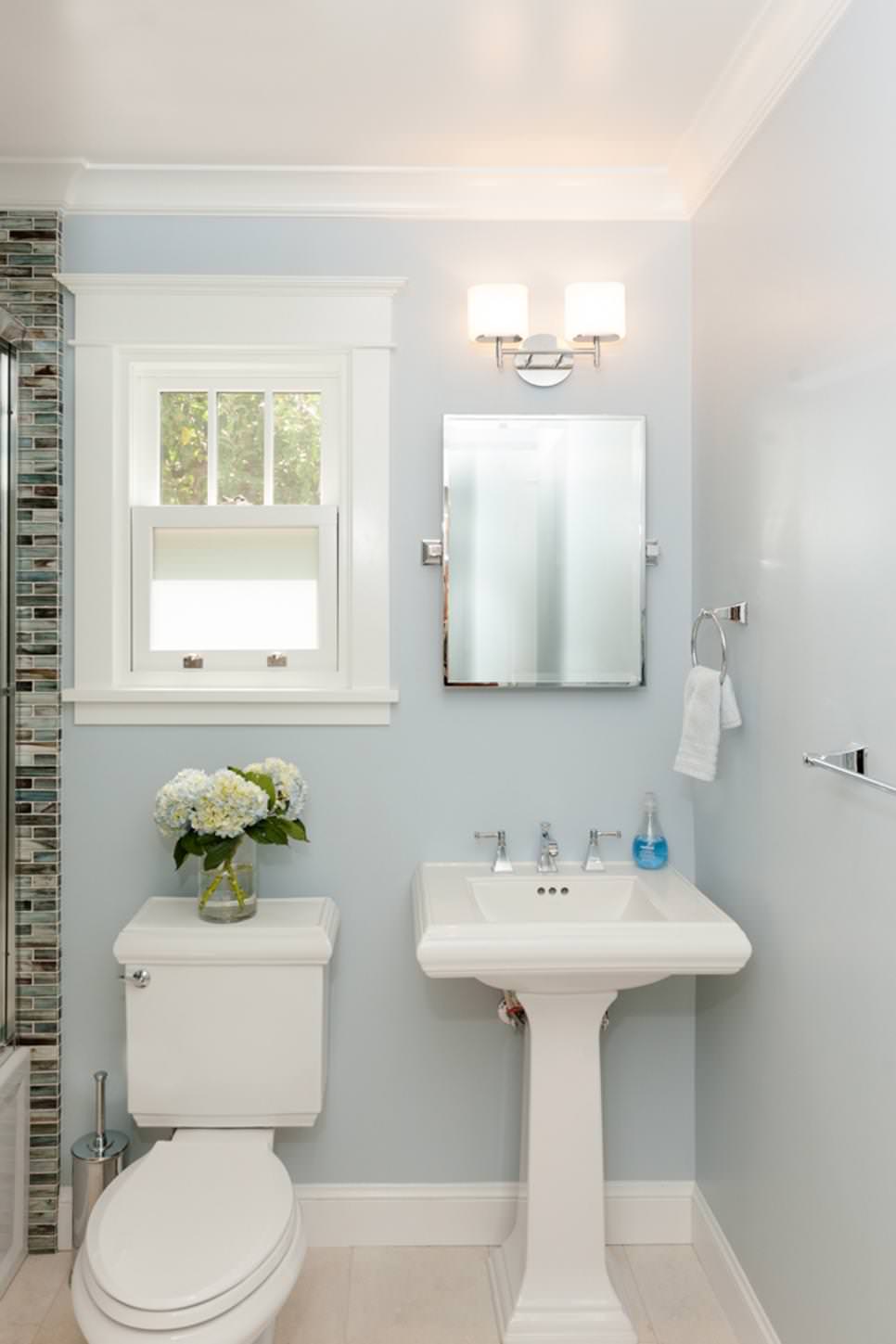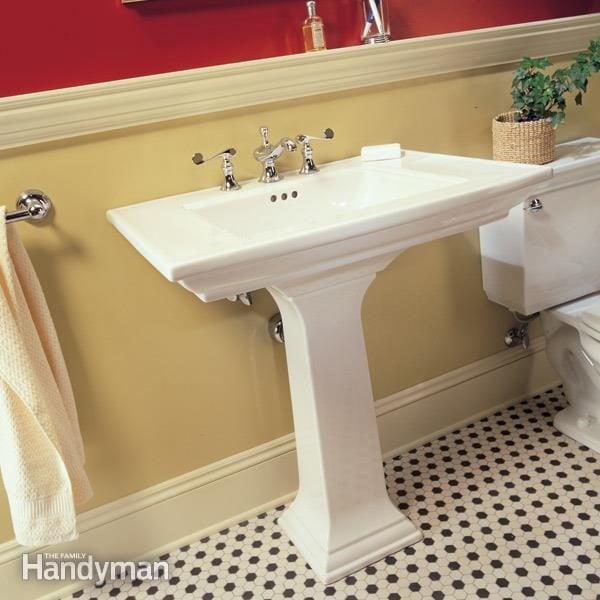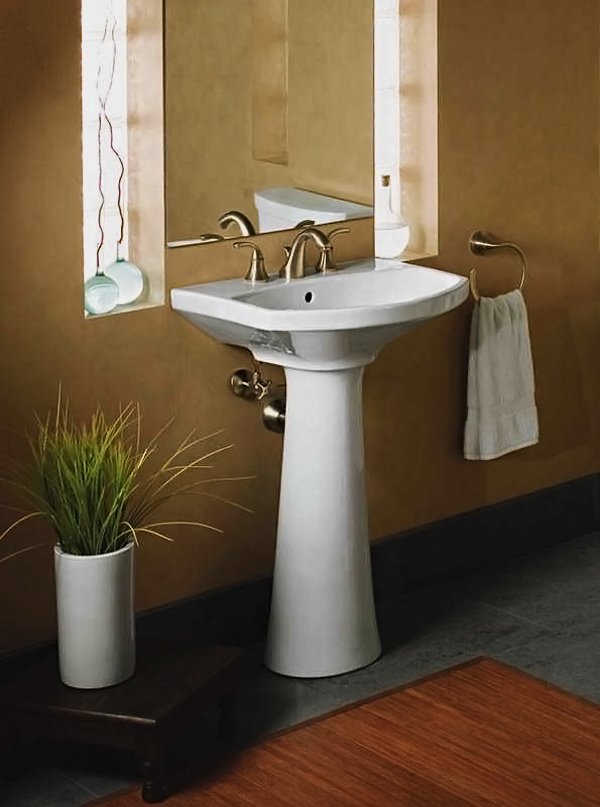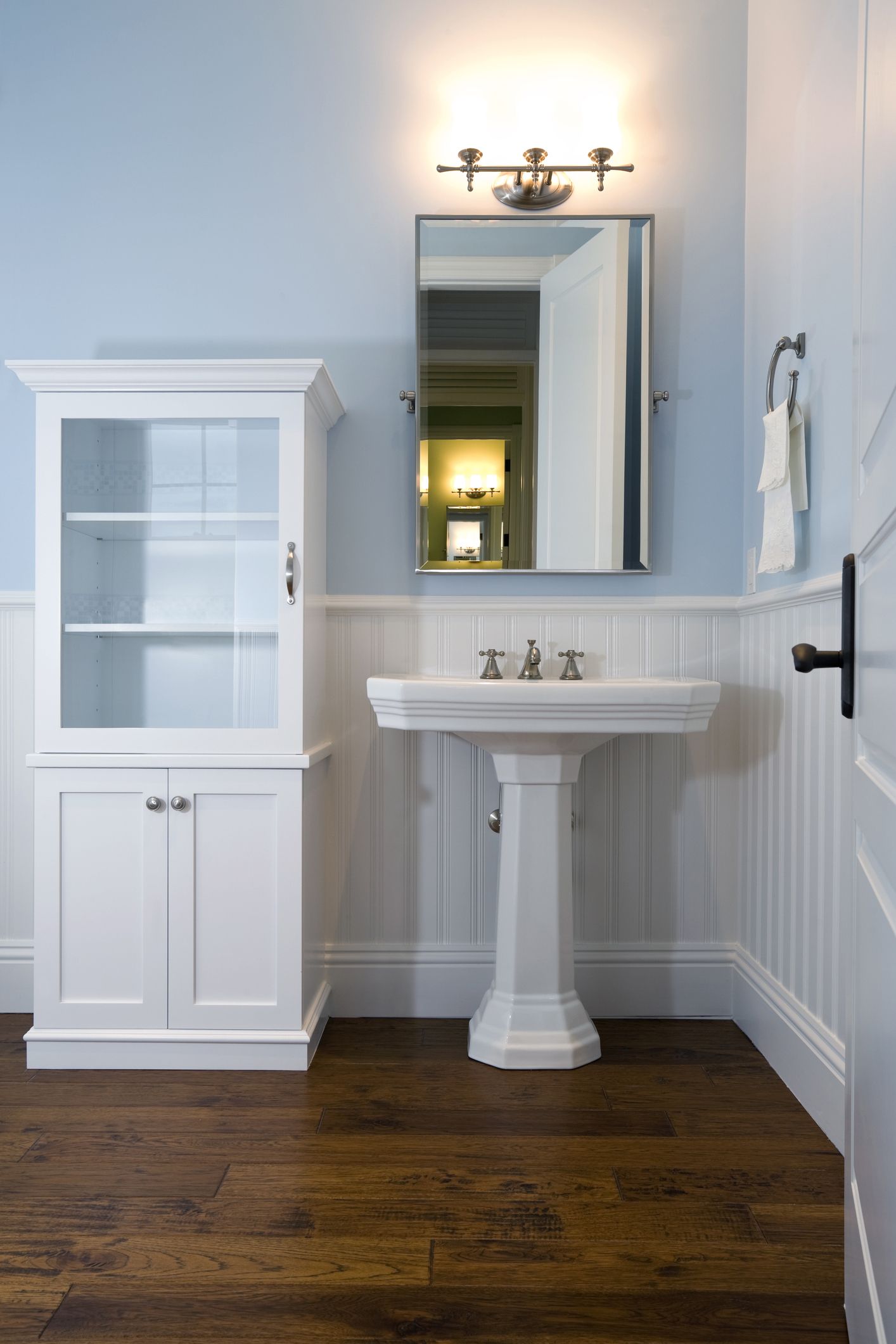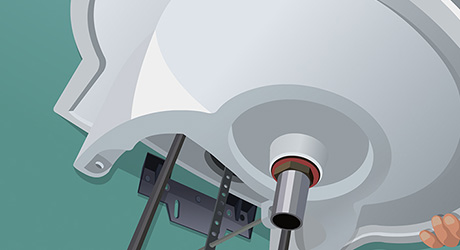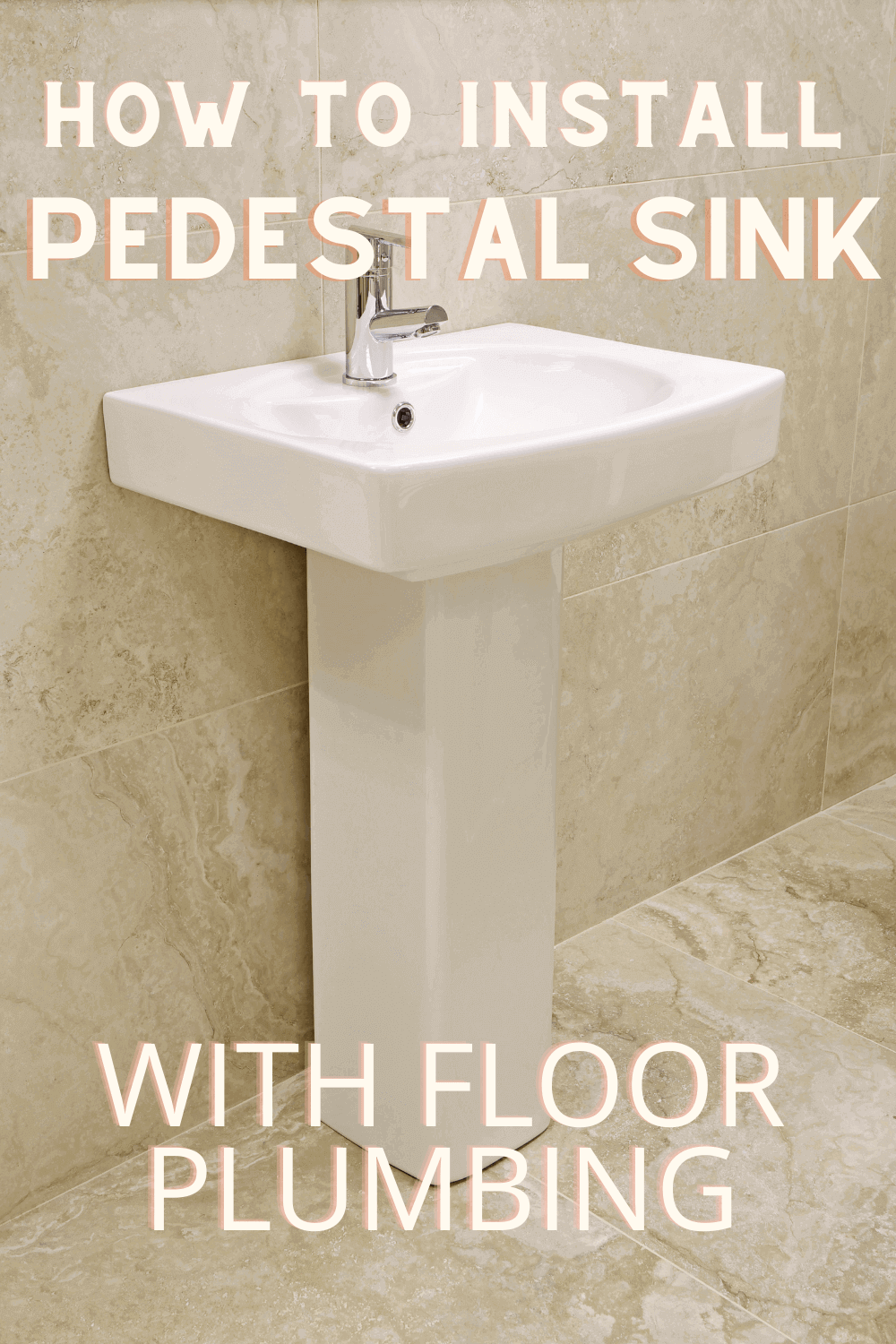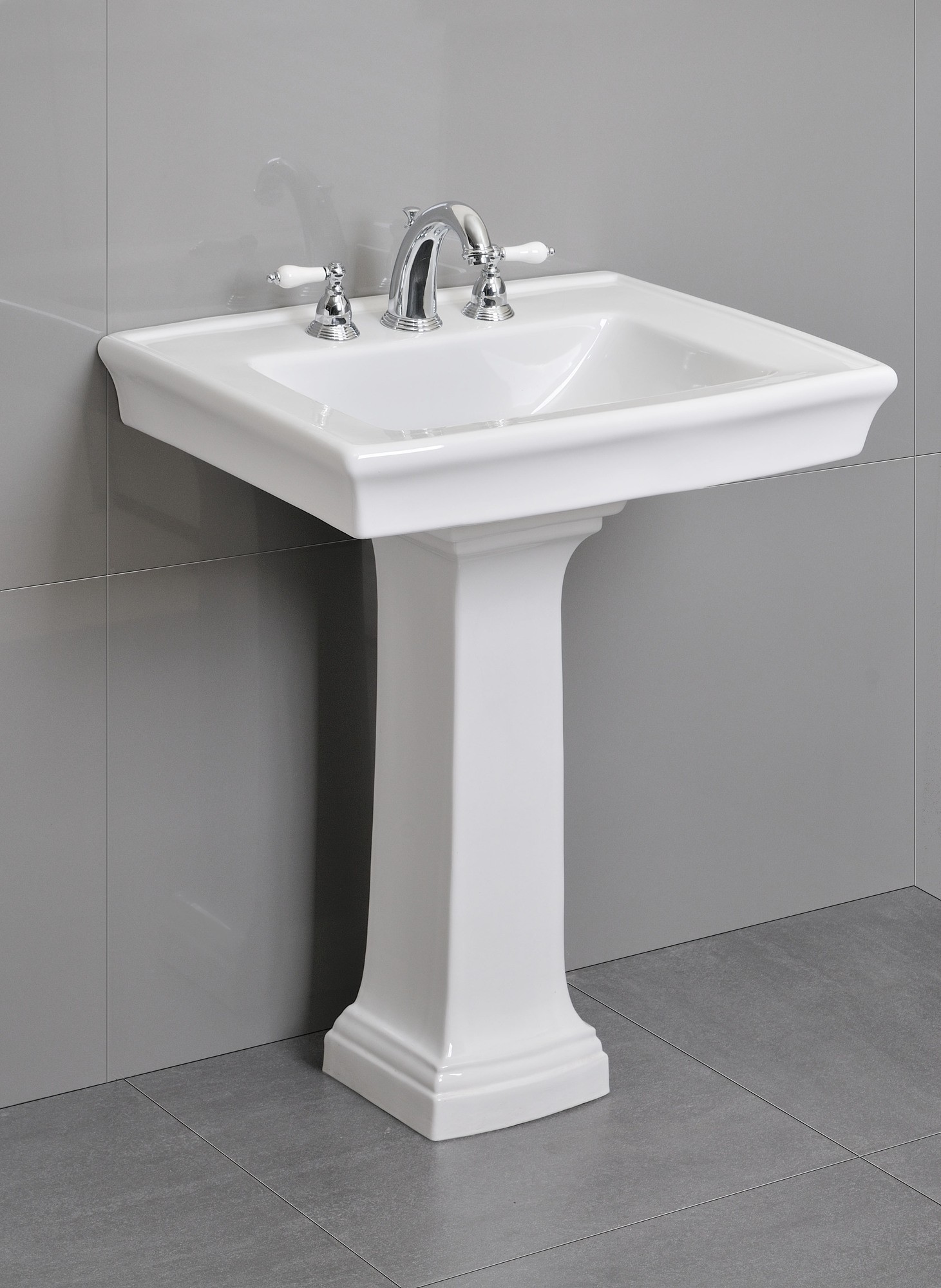Introduction to Pedestal Bathroom Sinks
Pedestal bathroom sinks are a classic and elegant choice for bathrooms of all sizes and styles. These sleek and space-saving fixtures consist of a basin mounted on a pedestal, providing a stylish alternative to traditional vanity cabinets. Whether you’re renovating a small powder room or updating a larger bathroom, a pedestal sink can add a touch of sophistication and charm to the space. Below are the benefits of pedestal bathroom sinks and how to install them properly to enhance your bathroom decor.
- Timeless Elegance: Pedestal bathroom sinks have been a staple in bathrooms for decades, thanks to their timeless elegance and classic design. Their simple yet sophisticated appearance makes them a versatile choice for a wide range of bathroom styles, from traditional to contemporary. Whether you prefer a vintage-inspired look or a modern aesthetic, a pedestal sink can complement your decor and enhance the overall ambiance of the space.
- Space-Saving Design: One of the main advantages of pedestal bathroom sinks is their space-saving design. Unlike traditional vanity cabinets, which can take up valuable floor space and make a small bathroom feel cramped, pedestal sinks free up floor space and create a more open and spacious feel. This makes them ideal for small bathrooms or powder rooms where space is limited.
- Versatile Installation: Pedestal bathroom sinks are available in a variety of sizes and styles, making them a versatile choice for any bathroom layout. Whether you have a compact powder room or a spacious master bathroom, there’s a pedestal sink to suit your space. They can be installed against a wall or in the center of the room, depending on your preferences and the layout of your bathroom.
- Easy Maintenance: Another benefit of pedestal bathroom sinks is their easy maintenance. Unlike traditional vanity cabinets, which can accumulate dust and grime in hard-to-reach areas, pedestal sinks have a simple and streamlined design that makes them easy to clean. Simply wipe down the basin and pedestal with a soft cloth and mild soap to keep them looking their best.
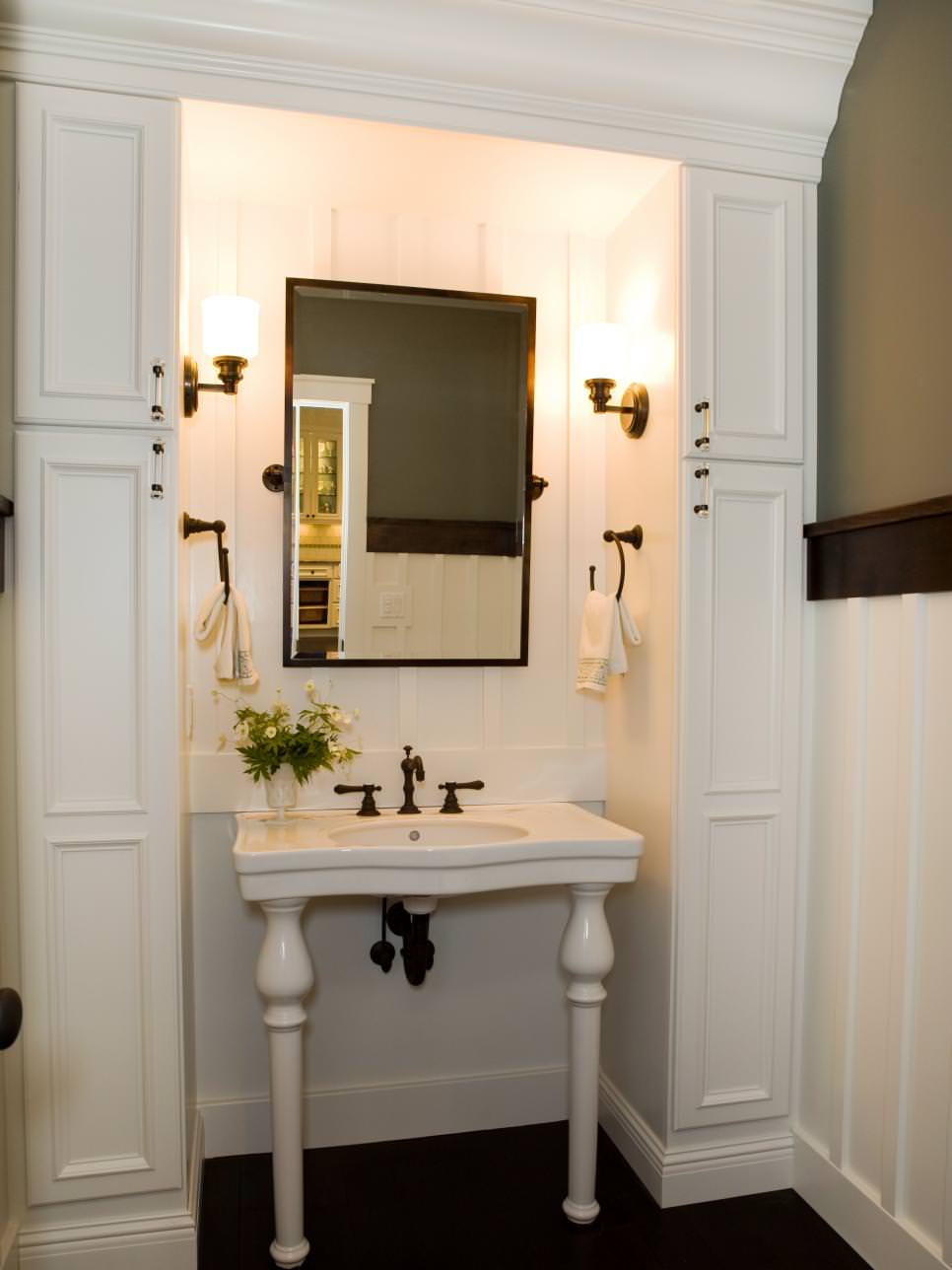
Preparing for Installation: Tools and Materials Needed
Before installing a pedestal bathroom sink, it’s important to gather all the necessary tools and materials to ensure a smooth and successful installation process. From basic hand tools to plumbing supplies, having everything you need on hand will make the installation process much easier and more efficient. Let’s outline the tools and materials needed to install a pedestal bathroom sink properly.
Tools Needed:
- Adjustable wrench
- Pipe wrench
- Screwdriver (Phillips and flathead)
- Adjustable pliers
- Hacksaw
- Level
- Drill with masonry bit (if installing on tile)
- Bucket or basin
- Tape measure
- Safety goggles and gloves
Materials Needed:
- Pedestal sink kit (includes basin and pedestal)
- Faucet and drain assembly
- Silicone caulk
- Plumbers putty
- PVC pipe and fittings
- Compression fittings (if necessary)
- Supply lines
- Teflon tape
- Mounting hardware (anchors, screws, etc.)
Safety Precautions:
Before starting any plumbing project, it’s essential to turn off the water supply to the bathroom to prevent accidental flooding or water damage. Locate the shut-off valves under the sink or at the main water supply and turn them clockwise to shut off the water flow.
Pre-Installation Inspection:
Before installing the pedestal sink, carefully inspect the area where it will be installed to ensure that the wall and floor are in good condition. Look for any signs of damage, such as cracks, holes, or water damage, and make any necessary repairs before proceeding with the installation.
Additional Supplies:
Depending on your specific installation needs, you may also need additional supplies such as shims, anchors, or fasteners to secure the pedestal sink to the wall or floor. Be sure to have these supplies on hand before starting the installation process to avoid delays or interruptions.
Step-by-Step Guide to Installing a Pedestal Bathroom Sink
Installing a pedestal bathroom sink may seem like a daunting task, but with the right tools and know-how, it can be a relatively straightforward process. Here is a step-by-step guide to installing a pedestal bathroom sink properly, from preparing the area to securing the sink in place.
Prepare the Area: Start by turning off the water supply to the bathroom and removing the old sink, if applicable. Disconnect the water supply lines and drain pipe from the existing sink and remove any mounting hardware or adhesive holding it in place. Clean the area where the new sink will be installed and make any necessary repairs to the wall or floor.
Assemble the Sink: Next, assemble the pedestal sink according to the manufacturer’s instructions. This typically involves attaching the basin to the pedestal using mounting hardware or adhesive. Be sure to follow the manufacturer’s instructions carefully and use the appropriate tools to ensure a secure and stable assembly.
Install the Faucet and Drain Assembly: Once the sink is assembled, install the faucet and drain assembly according to the manufacturer’s instructions. This typically involves inserting the faucet through the pre-drilled holes in the sink basin and securing it in place with mounting hardware. Then, install the drain assembly by attaching it to the underside of the sink basin and connecting it to the drain pipe.
Mount the Sink to the Wall: With the faucet and drain assembly in place, carefully lift the pedestal sink and position it against the wall. Use a level to ensure that the sink is straight and level, and mark the mounting holes on the wall with a pencil. Then, drill pilot holes for the mounting hardware and secure the sink to the wall using screws or anchors, depending on the wall material.
Connect the Plumbing: Once the sink is securely mounted to the wall, reconnect the water supply lines and drain pipe to the faucet and drain assembly. Use compression fittings or plumber’s putty to create a watertight seal, and be sure to tighten the connections securely with an adjustable wrench or pipe wrench.
Check for Leaks: Finally, turn on the water supply to the bathroom and check for any leaks or drips around the faucet and drain assembly. Tighten any loose connections as needed and wipe away any excess water with a soft cloth.
Finishing Touches: Once the sink is installed and the plumbing connections are secure, apply a bead of silicone caulk around the base of the sink to create a watertight seal and prevent water damage. Wipe away any excess caulk with a damp cloth and allow it to dry completely before using the sink.
Tips for Ensuring a Secure and Level Installation
Installing a pedestal bathroom sink requires careful attention to detail to ensure a secure and level installation. A properly installed sink not only enhances the aesthetic appeal of your bathroom but also ensures the longevity and functionality of the fixture. Below we share some tips for ensuring a secure and level installation of your pedestal bathroom sink.
Choose the Right Location: Before installing the pedestal sink, carefully consider the location to ensure that it is suitable for your needs and preferences. Choose a spot that provides easy access to the plumbing and complements the overall layout and design of the bathroom. Avoid placing the sink too close to other fixtures or obstacles that may obstruct access or interfere with the installation process.
Check for Level: Use a level to ensure that the sink is straight and level before securing it in place. Place the level across the top of the sink basin and adjust the position of the sink as needed until it is perfectly level. This will help prevent any unevenness or instability once the sink is installed and ensure a professional-looking finish.
Secure the Sink Properly: Use mounting hardware such as screws or anchors to secure the pedestal sink to the wall securely. Follow the manufacturer’s instructions for proper mounting and use the appropriate tools to ensure a tight and secure fit. Avoid overtightening the screws, as this can damage the sink or the wall surface.
Use Caulk or Adhesive: Apply a bead of silicone caulk or adhesive around the base of the sink to create a watertight seal and prevent water damage. This will also help secure the sink in place and prevent it from shifting or moving once installed. Be sure to use a high-quality caulk or adhesive designed for use in wet environments and allow it to dry completely before using the sink.
Test for Stability: Once the sink is installed, carefully test it for stability by gently pressing down on the basin and pedestal. The sink should feel solid and secure, with no wobbling or movement. If the sink feels unstable, double-check the mounting hardware and connections to ensure everything is properly tightened and secure.
Check for Leaks: After installing the sink and connecting the plumbing, turn on the water supply and check for any leaks or drips around the faucet and drain assembly. Tighten any loose connections as needed and wipe away any excess water with a soft cloth. Repeat this process periodically to ensure that the sink remains leak-free and properly sealed.
Finishing Touches and Additional Considerations
After installing a pedestal bathroom sink, there are a few finishing touches and additional considerations to keep in mind to complete the installation process and enhance the overall aesthetic appeal of your bathroom space. From decorating the area around the sink to ensuring proper ventilation, these final steps will help create a polished and functional bathroom design.
Decorate the Area: Once the sink is installed, take some time to decorate the area around the sink to enhance its visual appeal. Add decorative elements such as a framed mirror, artwork, or a potted plant to create a focal point and add personality to the space. Consider coordinating the decor with the style and finish of the sink to create a cohesive and harmonious design scheme.
Ensure Proper Ventilation: Proper ventilation is essential in any bathroom to prevent moisture buildup and mold growth. If your bathroom does not have a window, consider installing a ventilation fan to remove excess moisture and improve air circulation. This will help protect your pedestal sink and other fixtures from water damage and ensure a comfortable and healthy environment.
Add Storage Solutions: Since pedestal sinks do not have built-in storage like traditional vanity cabinets, consider adding additional storage solutions to keep your bathroom organized and clutter-free. Install shelves, cabinets, or baskets on the walls or in nearby alcoves to store toiletries, towels, and other essentials within easy reach.
Protect the Walls and Floors: To protect the walls and floors around the pedestal sink from water damage, consider installing waterproofing materials such as tile, beadboard, or wainscoting. These materials will not only enhance the aesthetic appeal of the space but also provide a durable and waterproof barrier against moisture.
Regular Maintenance: Finally, be sure to perform regular maintenance on your pedestal sink to keep it looking its best and functioning properly. Clean the sink regularly with a mild soap and water solution to remove dirt and grime, and wipe down the pedestal with a damp cloth to keep it looking clean and polished. Check the plumbing connections periodically for leaks or drips and address any issues promptly to prevent water damage and ensure the longevity of your pedestal sink.
Common Mistakes to Avoid
While installing a pedestal bathroom sink may seem like a straightforward task, there are several common mistakes that homeowners often make during the installation process. These mistakes can lead to issues such as instability, leaks, or improper alignment, compromising the functionality and appearance of the sink. Let’s discuss some common mistakes to avoid when installing a pedestal bathroom sink to ensure a smooth and successful installation.
Not Leveling the Sink: One of the most common mistakes when installing a pedestal bathroom sink is not leveling it properly. A sink that is not level can lead to instability and unevenness, making it difficult to use and compromising its appearance. Be sure to use a level to ensure that the sink is straight and level before securing it to the wall.
Using Incorrect Mounting Hardware: Another common mistake is using incorrect mounting hardware or failing to follow the manufacturer’s instructions for securing the sink to the wall. Using anchors or screws that are not suitable for the wall material can lead to instability or damage to the wall. Be sure to use the appropriate mounting hardware and follow the manufacturer’s instructions carefully to ensure a secure installation.
Improper Drain Alignment: Improper alignment of the drain assembly can lead to leaks or drainage issues, causing water damage and compromising the functionality of the sink. Be sure to align the drain assembly properly with the drain pipe and use plumber’s putty or silicone caulk to create a watertight seal around the drain flange.
Insufficient Clearance: Installing the sink too close to other fixtures or walls can lead to issues such as difficulty using the sink and damage to the sink or surrounding surfaces. Be sure to allow sufficient clearance between the sink and any surrounding fixtures or walls to ensure comfortable use and easy access.
Not Checking for Leaks: After installing the sink and connecting the plumbing, it’s important to check for leaks or drips around the faucet and drain assembly. Failure to check for leaks can lead to water damage and other issues down the line. Be sure to turn on the water supply and check for any leaks, tightening any loose connections as needed.
Do I need to hire a professional plumber to install a pedestal bathroom sink?
While installing a pedestal bathroom sink can be a DIY-friendly project, it’s important to have some basic plumbing skills and knowledge of the installation process. If you’re not comfortable with plumbing tasks or if your bathroom requires significant modifications to accommodate the sink, it may be best to hire a professional plumber to ensure a successful installation.
What tools and materials do I need to install a pedestal bathroom sink?
To install a pedestal bathroom sink, you’ll need basic hand tools such as an adjustable wrench, screwdriver, pliers, and level, as well as plumbing supplies such as silicone caulk, plumber’s putty, and PVC pipe fittings. Be sure to gather all the necessary tools and materials before starting the installation process to ensure a smooth and efficient installation.
How do I know if the sink is level before securing it to the wall?
To ensure that the sink is level before securing it to the wall, use a level to check both the basin and the pedestal. Place the level on top of the basin and pedestal separately and adjust their positions as needed until the bubble is centered. This will help ensure a straight and level installation of the sink.
How do I prevent leaks around the faucet and drain assembly?
To prevent leaks around the faucet and drain assembly, be sure to use the plumber’s putty or silicone caulk to create a watertight seal around the faucet base and drain flange. Tighten the connections securely with an adjustable wrench or pipe wrench and check for leaks by turning on the water supply and inspecting for any drips or leaks.
Can I install a pedestal bathroom sink on any type of wall?
Pedestal bathroom sinks can be installed on most types of walls, including drywall, plaster, and tile. However, it’s important to use the appropriate mounting hardware and follow the manufacturer’s instructions carefully to ensure a secure installation. If you’re installing the sink on tile, you may need to use a drill with a masonry bit to drill pilot holes for the mounting hardware.
How to install a pedestal basin
Pedestal Wall-Mount Bathroom Sink
How to install a pedestal sink without wall studs Modern
How to Install a Pedestal Sink
How to Install a Pedestal Sink
How to Install a Pedestal Sink with Floor Plumbing (Explained)
Bathroom Pedestal Sink
Related Posts:
- My Bathroom Sink Is Clogged What Do I Do
- Modern Farmhouse Bathroom Sink
- Moen Adler Bathroom Sink Faucet
- Hiott Wall Mount Bathroom Sink
- How To Clean Bathroom Sink Drain Trap
- Kohler Usa Bathroom Sinks
- Dropped Earring Down Bathroom Sink
- Why Does My Bathroom Sink Smell Like Sewer
- Glass Bathroom Sink And Counter
- 15 Inch Drop In Bathroom Sink


